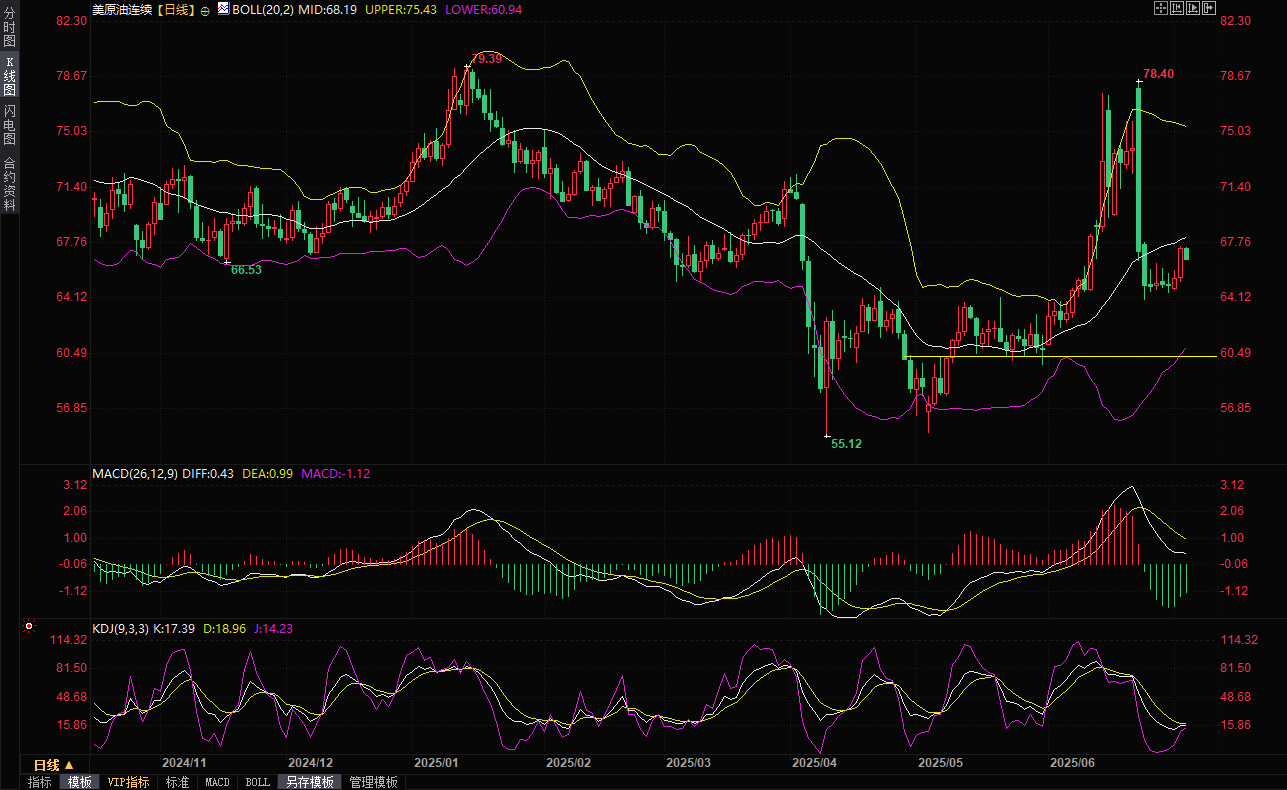Oil prices fell 1% from a one-week high amid the shadow of U.S. tariffs and OPEC+ production increase plans
2025-07-03 15:31:21

Oil prices retreat: calm after brief rebound
Just on Wednesday, international oil prices rose 3% on geopolitical tensions and optimism about trade agreements, with both Brent and West Texas Intermediate hitting one-week highs. However, just one day later, market sentiment quickly turned pessimistic. In Asia on Wednesday, Brent crude futures fell 1% to $68.40 a barrel; West Texas Intermediate fell 1.1% to $66.68 a barrel. The rapid decline in oil prices reflects the market's concerns about future demand and its sensitive response to changes in the supply side. Investors seem to be preparing for the coming uncertainty, especially with the upcoming Independence Day holiday in the United States.
U.S. tariffs: concerns on the demand side
As the world's largest crude oil consumer, the United States' policy trends have a far-reaching impact on the oil market. Recently, the United States' 90-day suspension of higher tariffs is about to expire on July 9, and trade negotiations with major trading partners such as the European Union and Japan have not yet made breakthrough progress. Higher tariffs may increase import costs and thus weaken fuel demand, which is undoubtedly a heavy blow to the already fragile confidence in the oil market. Market analysts pointed out that the uncertainty of tariff policies has made investors dare not act rashly, especially before the July 4 Independence Day holiday in the United States, a traditional consumption peak season, the market risk appetite has obviously declined.
OPEC+ production increase expectations: a new variable on the supply side
At the same time, the moves of the Organization of Petroleum Exporting Countries (OPEC) and its allies (collectively known as OPEC+) have also added new uncertainties to the oil market. It is reported that OPEC+ will discuss whether to increase daily production by 411,000 barrels at a meeting over the weekend. If this production increase plan is approved, it may further depress oil prices. ING analysts pointed out in their latest report that the combination of OPEC+'s production increase expectations and the uncertainty of the US tariff policy has made market participants more inclined to wait and see rather than aggressively invest before the long weekend. The increase in supply may ease some of the supply concerns caused by geopolitical tensions, but it may also exacerbate market expectations of a downward trend in oil prices.
Geopolitical fallout: Iran nuclear dispute resurfaces
An important factor driving the rise in oil prices on Wednesday was the re-heating of the Iranian nuclear issue. Iran's suspension of cooperation with the UN nuclear watchdog has raised market concerns about potential conflicts in the Middle East. As an important oil-producing country, the controversy over Iran's nuclear program could lead to further deterioration of the regional situation and even affect the global crude oil supply chain. Nevertheless, the short-term boost from geopolitical risks seems to have been offset by other negative factors, and oil prices have failed to continue their upward trend.
U.S. inventories unexpectedly rise, a sign of weak demand
The latest data from the U.S. Energy Information Administration (EIA) showed that U.S. crude oil inventories unexpectedly increased by 3.8 million barrels last week, reaching a total of 419 million barrels, while the market had previously expected inventories to decrease by 1.8 million barrels. This data not only exceeded analysts' expectations, but also further exacerbated market concerns about weak U.S. demand. Even more disturbing is that gasoline demand fell to 8.6 million barrels per day, far below the expected level during the peak summer driving season. As a traditional peak consumption season, the sluggish summer demand casts a shadow on the outlook for the oil market.
Non-farm data preview: clues to the Fed's rate cut
Market attention has now turned to the US non-farm payrolls report, which will be released on Thursday. This report is seen as an important indicator for assessing the health of the US economy and will also provide key clues for the Fed's interest rate cut path in the second half of the year. If the employment data is strong, it may reduce market expectations for interest rate cuts, thereby further depressing oil prices; conversely, weak data may increase expectations for interest rate cuts and provide some support for oil prices in the short term. Analysts generally believe that under the current multiple uncertainties, the performance of non-farm data will have an important impact on oil market sentiment.

(The main US crude oil can be seen on the daily chart, source: Yihuitong)
At 15:30 Beijing time, U.S. crude oil is currently trading at $66.70 per barrel.
- Risk Warning and Disclaimer
- The market involves risk, and trading may not be suitable for all investors. This article is for reference only and does not constitute personal investment advice, nor does it take into account certain users’ specific investment objectives, financial situation, or other needs. Any investment decisions made based on this information are at your own risk.










